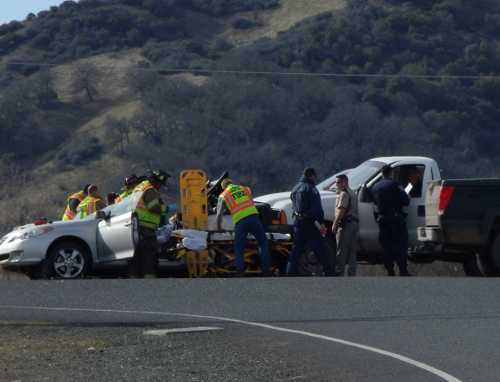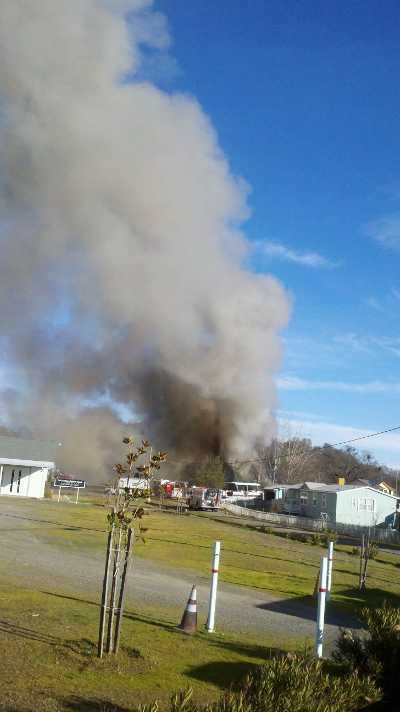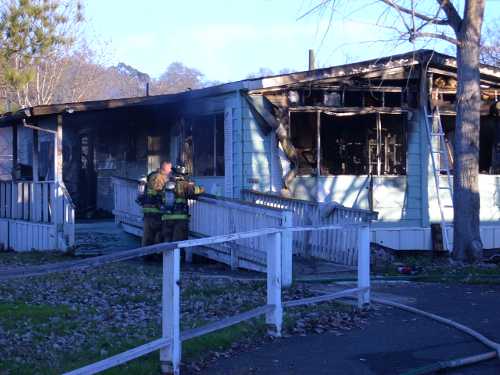- Lake County News Reports
- Posted On
The Veggie Girl: Rustic ground candy
I’ve spent the last week immersed in the rustic cuisine of root vegetables. Turnips and rutabagas have been on my menu, not to mention a parsnip or two.
It all started innocently enough, with a dare from an old college friend. He expects to be pulling a large number of turnips from the ground over the next couple of months, and he challenged me to share five recipes using this rustic root. Loving a rousing bit of food research, I was happy to comply.
Shortly afterward, I received a plea from a high school friend who’s got rutabagas spilling forth from her coastal garden.
“What can I do with them?” she wondered.
I decided it was only right to add rutabagas to my recipe odyssey.
You would be surprised how many cookbooks ignore these humble roots, but I did manage to find a few that gave them mention. At times turnips were honored while rutabagas were not; other cookbooks had both included.
While thumbing through Julia Child’s classic, “Mastering the Art of French Cooking,” in search of rooty inspiration, my husband joked (while imitating her fluty voice) that surely she would recommend smothering them in butter and animal fat.
When I opened the page with general information on turnips, I found this: “The turnip is a wonderful vegetable when given the treatment required to bring out its delicious qualities. It wants and needs to absorb butter or meat fats …”
Uncanny, isn’t it?
She goes on to say this is why they’re particularly succulent when finished off in a stew or braised dish, or in the juices of roasting meat.
She also mentions that in France rutabagas are practically unheard of as food for humans (my mother, once a French chef, says they use them as animal fodder), but they may be used interchangeably with turnips.
Substituting rutabagas and turnips for one another in recipes was a theme I found in my research. This makes sense, as they have quite a bit in common.
Both are in the brassica family, along with cabbage, kohlrabi, Brussels sprouts, broccoli, mustard and cauliflower. It’s believed that rutabagas originated in the wild as a cross between turnips and wild cabbage. They’re sometimes referred to as the yellow turnip.
While turnips have broad appeal worldwide (they’re pickled in Japan, used to flavor a Turkish juice made from carrots, boiled in Iran as a remedy for fever, used in a variety of dishes in India, and were well established in ancient Rome), the geographical popularity of rutabagas doesn’t seem to extend too far beyond northern Europe. Maybe that’s because its history as a vegetable is not as long.
While they’ve been cultivated in the U.S. for nearly 200 years, they’re rarely found on our tables, though my mother maintains that it’s impossible to make a proper pot roast without them.
Rutabagas are so closely associated with Scandinavia that in many parts of the English speaking world they’re referred to as Swedes. In the U.S. and Canada, the term rutabaga is employed, which derives from the Swedish word “rotabagge.”
The rutabaga, with yellowy flesh and a bit of purple on its shoulders, is full of beta carotene in the form of vitamin A. As well, it contains vitamin C and good stores of minerals like calcium, magnesium and iron.
Its stepfather, the turnip, with its white flesh (also accented with purple) is high in vitamin C, but doesn’t share the other nutritious reserves of the rutabaga.
The greens of both vegetables are extremely nutritious, however, more so than the roots. Young tender leaves are preferred, as they don’t have the bitterness that can develop as leaves mature and age. If the greens you have are older, you may remove bitterness by boiling them first, discarding the water and then using them as you would normally.
So what can you do with these rustic and nutritious roots?
In addition to using them in a stew or braising with meat, Julia Child has a few other recommendations for turnips (or, alternatively, for rutabagas), such as blanching them and tossing them with butter, lemon juice, and parsley; mashing them with potatoes; glazing them with butter and sugar; and, finally, making a turnip casserole with bacon and onions, flavored with sage.
The Finns use rutabagas in any recipe that calls for root vegetables. There they’re the major ingredient in a traditional Christmas casserole; they flavor soups with them; and they thinly julienne raw rutabagas as a side dish or salad.
Like Julia Child, the Swedes and Norwegians mash rutabagas with potatoes, but they add carrots for color. This puree – with the occasional addition of onion – is a popular accompaniment to many regional dishes.
In Scotland, rutabagas are endearingly referred to as “neeps.” The Scots mash them and potatoes separately for a dish they call “neeps and tatties” (with tatties being their word for potato).
Bubble and squeak, another cutely-named dish from the British Isles, is a pancake of sorts made with mashed winter vegetables. It was developed to use the veggies left over from the roast served for Sunday dinner.
To get the consistency right, it’s recommended that potatoes make up about 60 percent of the mixture. The rest can be any winter vegetables, including turnips, rutabagas, leeks, onions, carrots, Brussels sprouts or cabbage. Simply mash up soft veggies, form into a patty and cook in a hot pan with olive oil or butter.
And what of my own research? I used them in stews and soups, mashed them in varying quantities with potatoes and other vegetables, and found some subtle differences between the two.
I recommend using small to medium roots, though extra large specimens, especially of rutabagas, are sometimes stocked in the produce aisle.
Rutabagas are a bit denser and more fibrous than turnips. I enjoyed eating turnips raw, but not so much rutabagas.
The raw crunch of turnips, with their rather mild flavor and subtle peppery note, appealed to me.
Rutabagas, in my opinion, hold up a bit better when cooked and add more substance than turnips to mashed potatoes.
If you have an extra large rutabaga, you might be interested to know that the Scots and Irish carved faces into them and used them as candle lanterns in their inaugural Halloween festivals.
I’ll leave you with a recipe I developed for a root vegetable pot pie. As with bubble and squeak, any combination of root vegetables may be used. (I just wish I could think of a name for it that’s as clever!) The leftovers are nice warmed up the next day as a stew or thick soup. Enjoy!
Root vegetable pot pie
2 or more tablespoons olive oil1 large yellow onion, sliced
½ pound of mixed mushrooms (e.g., white button, crimini, Portabellas), sliced or roughly chopped
4 garlic cloves, minced
4 cups vegetable or chicken stock, homemade or otherwise
2 parsnips, peeled and diced
2 medium turnips, peeled and diced
2 medium rutabagas, peeled and diced
2 medium carrots, peeled and diced
2 ribs celery with leaves, sliced
¾ cup dry sherry
1 cup frozen green peas, thawed
2/3 cup all purpose flour
1 ½ cups milk of your choice
¼ cup chopped fresh parsley
2 tablespoon chopped fresh thyme
1 ½ teaspoon salt (more to taste, if needed)
Freshly ground black pepper
Cooking spray
1 sheet frozen puff pastry dough, thawed
Preheat oven to 400 degrees F.
Bring broth to boil in pot and add parsnips, turnips, rutabagas, carrots, and celery; cover, reduce heat and simmer about five minutes.
Meanwhile, sauté onion and mushrooms in very large skillet or soup pot until just tender.
Add garlic and sauté a minute or so longer; add sherry and sauté another minute or so.
Add broth and vegetables to mushroom mixture.
Mix milk and flour; add to mushroom mixture. Stir to blend and cook for about five minutes or until thickened.
Stir in parsley, thyme, salt, pepper and peas, if using. Taste and adjust seasonings.
Spray individual ramekins with cooking spray and spoon mixture into them.
Place puff pastry dough on floured surface and cut rounds that will fit over ramekins.
Place dough over each ramekin and cut slits in dough to allow steam to escape. Coat dough lightly with cooking spray.
Place ramekins on baking sheet and bake for 16 minutes or until pastry is browned and filling is bubbly. Allow to rest for a few minutes before serving.
Note: In lieu of ramekins, this may be made in an 8-inch by 13-inch oblong pan. Roll out the puff pastry to fit and lay it over the top of the vegetable mixture, making slits in the dough for steam to escape.
Recipe by Esther Oertel.
Esther Oertel, the “Veggie Girl,” is a culinary coach and educator and is passionate about local produce. Oertel teaches culinary classes at Chic Le Chef in Hidden Valley Lake, Calif., and The Kitchen Gallery in Lakeport, Calif., and gives private cooking lessons. She welcomes your questions and comments; e-mail her at This email address is being protected from spambots. You need JavaScript enabled to view it..
Follow Lake County News on Twitter at http://twitter.com/LakeCoNews , on Facebook at http://www.facebook.com/pages/Lake-County-News/143156775604?ref=mf and on YouTube at http://www.youtube.com/user/LakeCoNews .

 How to resolve AdBlock issue?
How to resolve AdBlock issue? 











